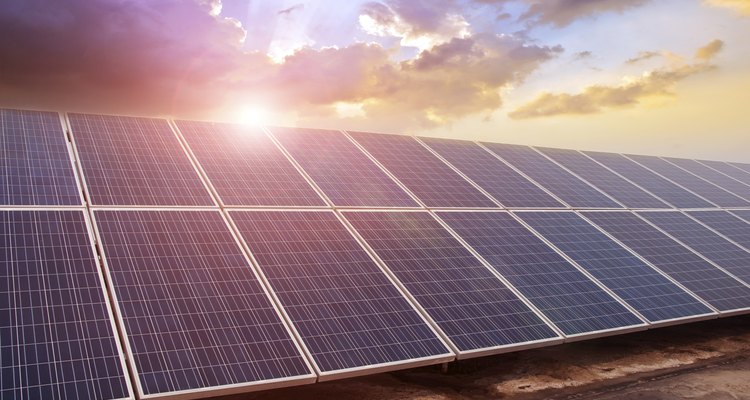
Jeff_Hu/iStock/Getty Images
When most people think of solar energy, they think of solar panels generating electricity to run lights and other devices in the home. Photoelectric cells are not the only way to harness solar energy, however. There are many simple and low-tech ways you can harness the energy from the sun to reduce your energy bills and heat your home or water. This use of solar energy is often called passive solar.
Passive and Active
While there are many different ways to use the sun’s heat, how that heat is used and transferred determines whether the system is active or passive. Essentially, a passive system uses few or no moving parts. If you use the sun’s heat to warm a water tank, that would be passive solar; if you were to pump that water through your walls to heat your home, that would be active solar heating.
Direct Gain
The simplest and most basic form of passive solar can be achieved through the windows on the side of your home facing the equator. As most of the sunlight will come in through these windows, leaving them unshaded will create a greenhouse effect and raise the temperature by several degrees. If the sunlight strikes dense materials such as masonry inside your home, these surfaces will absorb heat and radiate it over time.
Sunspaces
In addition to direct gain heating, homes designed to take advantage of passive solar often use what are called sunspaces. Much like a greenhouse, these rooms feature lots of windows and are situated to best take advantage of the sun’s rays. The greenhouse effect warms the air in a sunspace quickly, and given open spaces throughout the home, the heated air will circulate throughout the building.
Trombe Walls
Another way of using passive solar heating is through what is called a Trombe wall, which is a south-facing wall made of heat-absorbing material and painted dark. During the day, a Trombe wall absorbs heat from the sun, and that heat is radiated into the home once the sun goes down. While sunspaces can become uncomfortably hot in the summer, Trombe walls can be used year-round and allow the heat to flow when it is most needed.
Hot Water
The sun’s energy can not only be used to heat the air in your home, it can provide hot water as well. Solar hot water systems use thermal collectors mounted to a series of pipes. When water flows through the system, it absorbs heat from the collectors, raising its temperature. Unfortunately, in most climates these systems are rarely able to provide enough hot water for an entire household, but they can be used in conjunction with a conventional water heating system to save energy.
Related Articles

Appliances That Use Solar Energy

The Disadvantages of Passive Solar ...

Why Heat Does Not Transfer Through a ...

How Do Citizen Eco-Drive Watches Work?

Uses of Thermal Insulators

How Does Infrared Cooking Work?

Can You Pour Boiling Water Into a ...

Kinetic Watches Vs. Eco-Drive Watches

How to Build Your Own Mobile Kitchens

How to Set a Citizen Skyhawk Eco Drive ...

The Purpose of a Heat Exchanger

How Does a Tanning Bed Work?

How do Solar Watches Work?

Different Styles of Cigarette Lighters

Parts of a Hair Dryer

What Is a Watch Capacitor?

How to Make a Sparkler Rocket

How to Use Bathtub Jacuzzi Jets

How to Cook With Radiant Heat

How to Conserve Natural Gases
References
Writer Bio
Milton Kazmeyer has worked in the insurance, financial and manufacturing fields and also served as a federal contractor. He began his writing career in 2007 and now works full-time as a writer and transcriptionist. His primary fields of expertise include computers, astronomy, alternative energy sources and the environment.
Photo Credits
Jeff_Hu/iStock/Getty Images